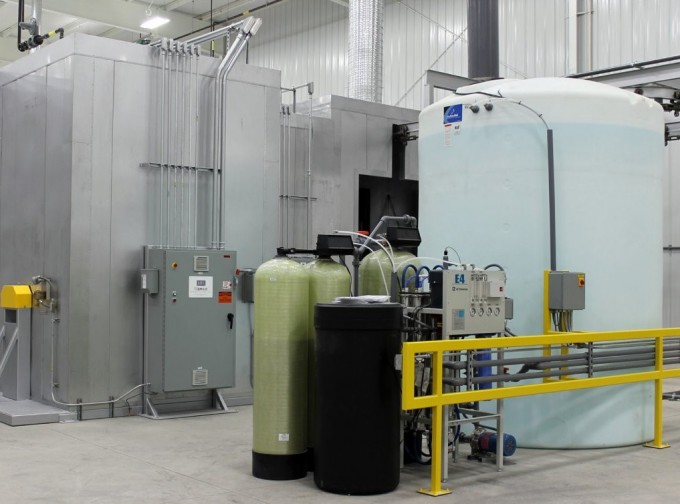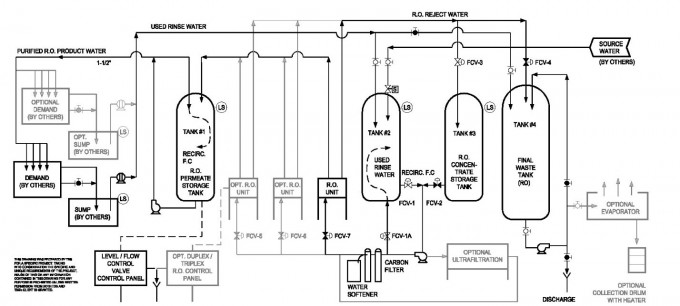
Implementation of Reverse Osmosis (RO) minimizes water usage and wastewater generation; consequently improving efficiency of industrial processes.
Application of Reverse Osmosis technology for process water usage during all phases of industry provides multiple benefits. Effective implementation can provide huge savings by reducing usage of water, chemicals, energy, and occurrence of mechanical failures, while increasing efficiency of industrial processes, quality of end services, and helping companies meet the requirements for ISO 9000 and ISO 14000 standards.
The working principle is to utilize purified RO water for any process of industry which uses large amounts of water. Due to the elevated magnitude of water consumed during industrial processes, the economy of scale associated with replacing the use of source water with purified RO water can result in serious return on investment. Proven benefits of using purified RO water, based on currently commercialized solutions, are best exemplified by examination of spot-free rinse applications primarily used for paint and powder coating. These benefits include:
1. Reducing dump frequency of chemicals due to contamination during evaporative make-up.
Heated stages in spot-free washers experience high levels of evaporation. Alkaline baths can require make-up of 500 gallons per day (GPD). That amount of non-purified source water usually contains 2 pounds of salt; which will raise the concentration of a 2000 gallon alkaline cleaning mixture by 100mg/L Total Dissolved Solids (TDS) per day. After 1 to 2 months the TDS content of the bath will raise 2000 mg/L, eventually the bath must be dumped, refilled, and recharged with new chemicals. Utilization of purified RO water for evaporative make-up of chemical baths drastically reduces the frequency of bath dumping thereby minimizing source water usage, wastewater generation, and chemical consumption.
2. Reducing overflow and thereby reducing water consumption and wastewater volume.
Spot-free rinse water becomes contaminated due to chemical carryout from previous washer stages. Overflow water is added to keep the rinse water below acceptable levels of concentration. By using Purified RO water (10mg/L TDS) rather than non-purified source water (400 mg/L TDS) we are able to substantially reduce overflow rates. This translates to less consumption of source water and less production of wastewater to discharge.
3. Eliminating scale and sludge damage to heat exchangers and spray nozzles.
Heat exchangers and spray nozzles experience scale and sludge accumulation during regular usage due to dissolved solids in water. Utilization of purified RO water rather than non-purified source water drastically minimizes scale and sludge damage frequency to heat exchangers and spray nozzles.
Utilizing Purified RO water results in huge financial savings in industrial applications by: reducing usage of water, chemicals, energy, and occurrence of mechanical failures; while increasing efficiency of industrial processes and the quality of end services. Purified RO water for industrial processes has proven benefits when dealing with large volumes of water, excessive mineral and/or organic contamination, and the effects of evaporation.











